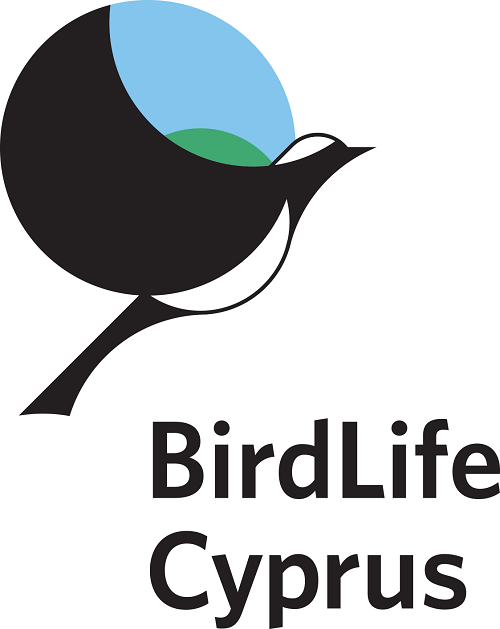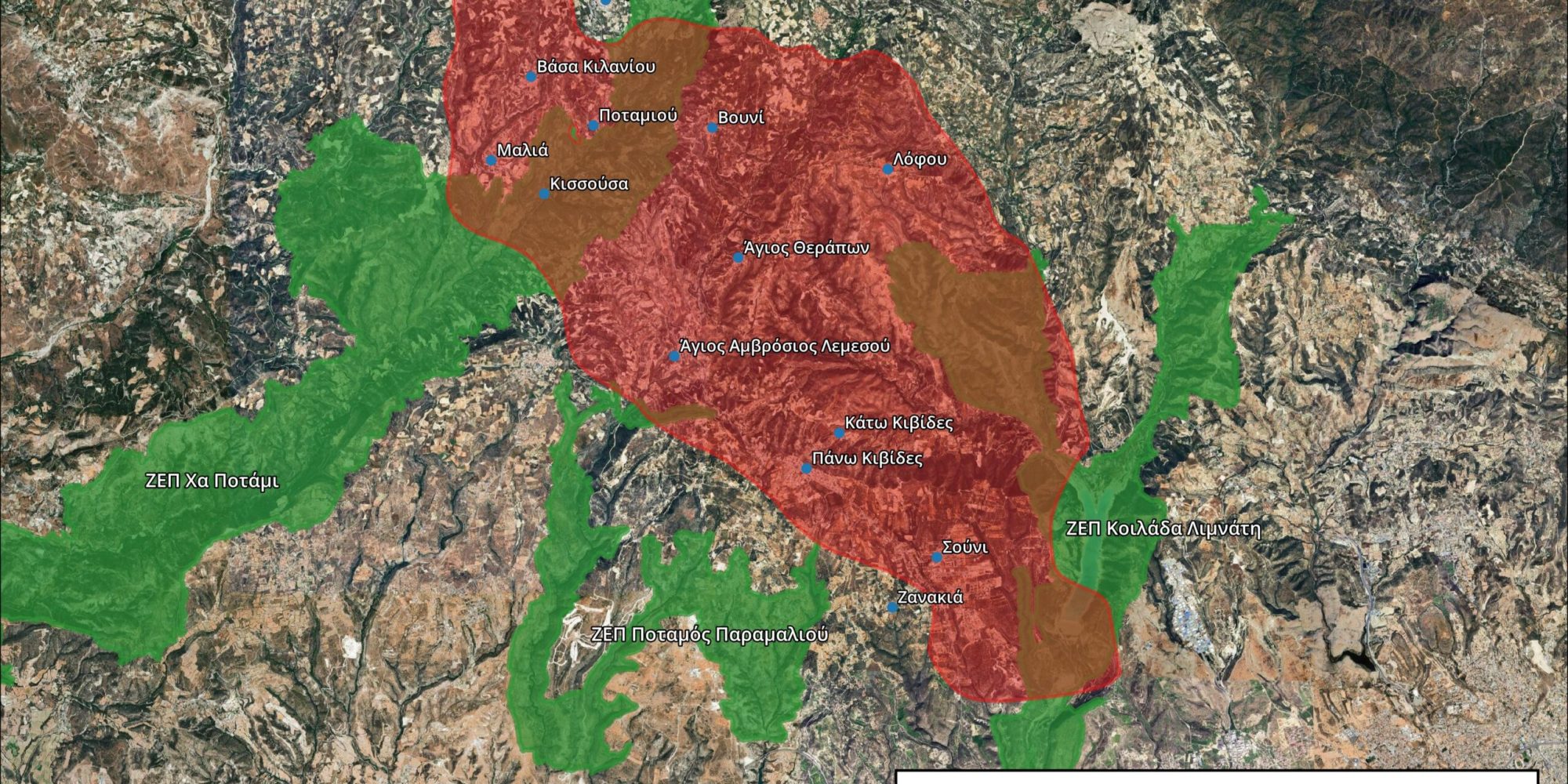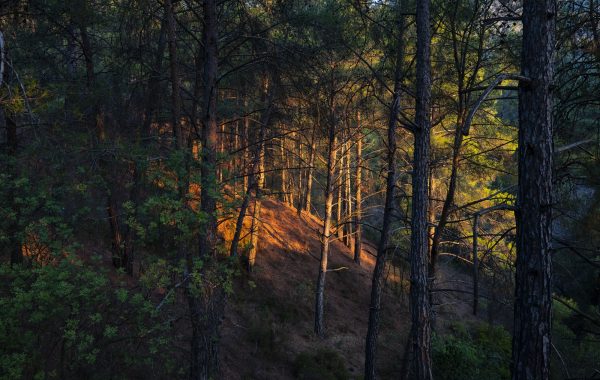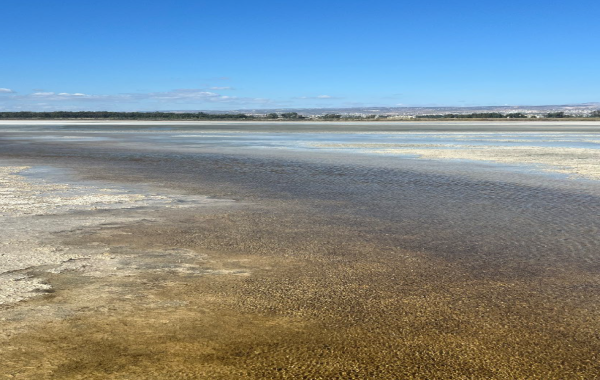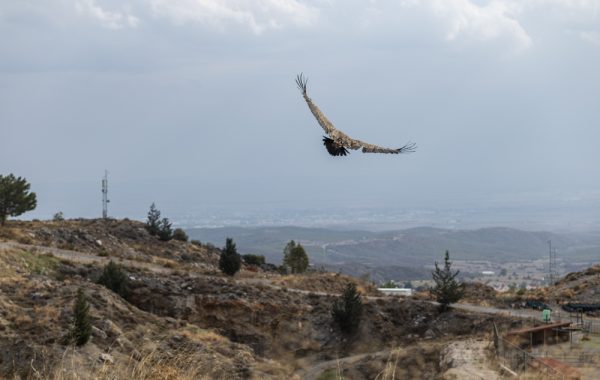The devastating wildfire in Limassol District has impacted human lives, highlighting the socio-economic dimension of climate change and nature degradation. While the state assesses material damages, the damage to ecosystems remains incalculable.
The fire swept through landscapes and habitats of high ecological value, affecting three Natura 2000 protected areas: Limnatis Valley, Ha Potami, and Paramali River.

Burned area (% of total Special Protection Area – SPA):
• Limnatis Valley: 46.7% (13.5 km²)
• Ha Potami: 15.5% (12.4 km²)
• Paramali River: 1.7% (0.3 km²)
These areas host important habitats, birds of prey (Long-legged Buzzard, Bonelli’s Eagle, Griffon Vulture), and endemic species (Cyprus Warbler, Cyprus Wheatear), which rely on them for breeding and feeding. Their value for biodiversity and the ecosystem services they provide is priceless. Yet, they remain vulnerable, even under protection status.
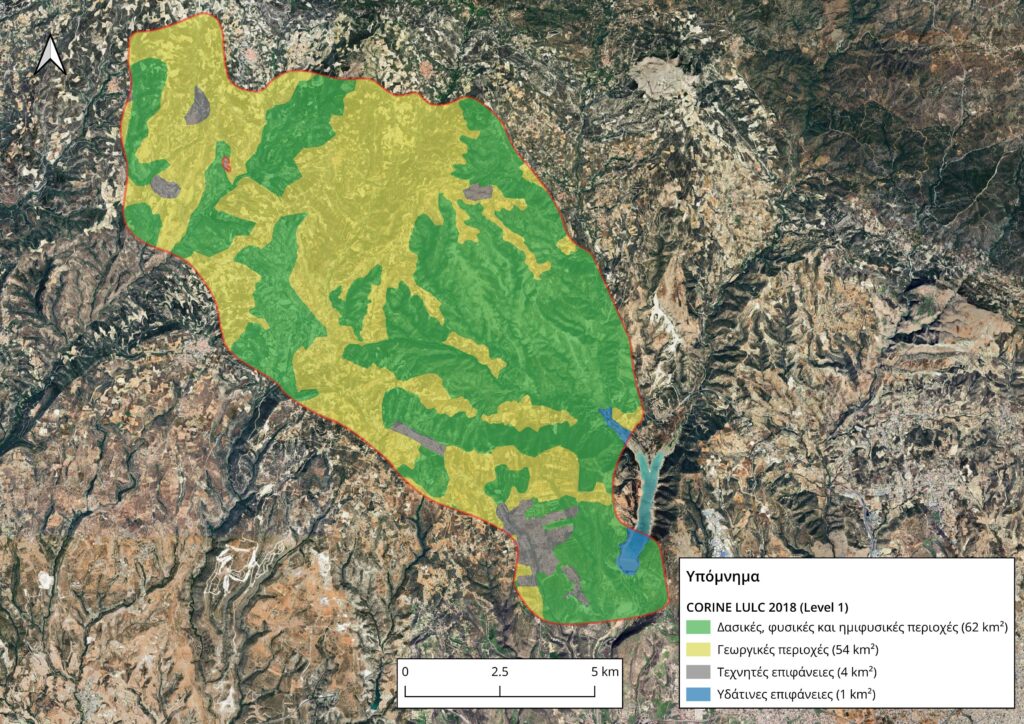
Based on our land use analysis, the fire burned*:
• 62 km² of forest, natural and semi-natural areas
• 54 km² of agricultural land
• 4 km² of artificial surfaces
• 1 km² of water bodies
The natural regeneration of the burnt land is uncertain, as the climate crisis worsens prolonged droughts and extreme weather. The scientific community has been warning of climate change for years. The State is informed and has legal obligations to take mitigation and adaptation measures. Yet, it continues to lack a modern, long-term plan for wildfire prevention and management.
Wildfire prevention and response require a holistic and coordinated approach. What’s missing is political will for implementation. For years, BirdLife Cyprus has been presenting clear, evidence-based proposals for a modern strategy of prevention and action, including:
• Landscape management and strengthening of agriculture and grazing in the countryside, creating a mosaic of land uses that reduce fire spread
• Resilient forest ecosystems with species diversity – not monocultures like pine forests
• Regulations for isolated housing and a ban on harmful practices like burning
• Education, volunteers, and rapid response plans
• Firefighting: in addition to adequate ground forces, we need high-capacity aerial firefighting for early suppression
• Natural regeneration wherever possible, with minimal mechanical intervention
• Deterrent penalties, and most importantly, their actual enforcement
This catastrophe must finally serve as a turning point for serious change to prevent further loss of human lives, property, and irreplaceable nature.
The policy proposals we submitted last year with Terra Cypria can be found here.
*LULC analysis based on CORINE 2018 LEVEL 1
